Greek project as an attempt by Russia to crush the Ottoman Empire
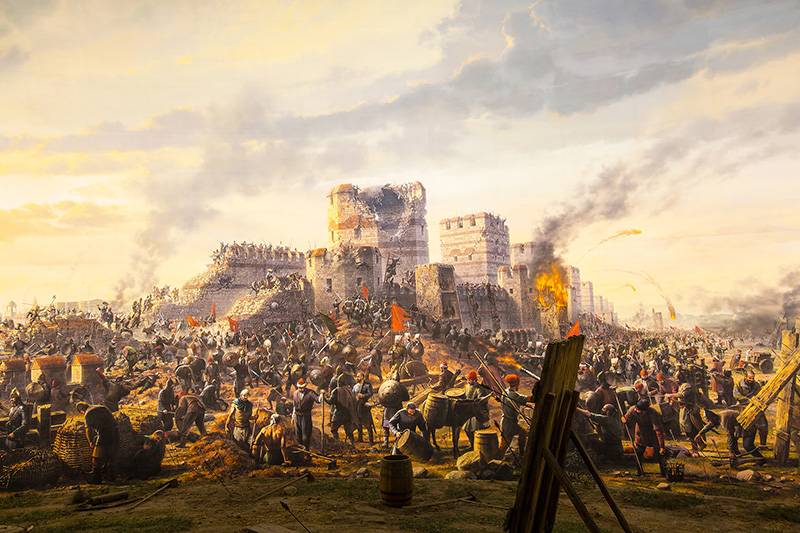
It was already difficult to name the empire perishing under the Turkish scribes. The once great power, whose possessions included the lands of Europe, Asia and Africa, by the middle of the XV century had become scraps barely visible on the map, the largest of which was semi-independent of Constantinople Morea. The huge city, although it had lost its dazzling majesty, went to the triumphant winners.
Possessions of the Ottoman Turks are now a solid block, stretching from the Balkans to the Persian Gulf. The new empire did not want to stop there - its expansion continued. However, even when the Turkish scythe was blunted and the onslaught of onslaught was replaced by dyspneal dyspnea, the sultans continued to firmly hold their hand on the pulse of the Black Sea straits, and the crescent banner flew over the ancient walls of Constantinople.
The Ottoman Empire had many opponents. Some were inclined to the will of the winners and disappeared from the maps, others tried to live with the conquerors in a kind of symbiosis, to sooner or later share the fate of the first. There was a third kind of opponents: more or less strong states capable of fighting the Ottoman Empire on an equal footing. This confrontation, accompanied by a series of wars with intermittent victories and defeats, lasted for more than one century, until the Ottoman Porta finally abandoned its expansion into Europe.
Far to the north of the hot Mediterranean was Muscovy, which, declaring itself the successor of the fallen Byzantium, has not yet come into contact with the Turks on any front other than the diplomatic one. Muscovy, as this country was called in Europe, had many enemies of its own and problems, and the khanate located in Crimea, a faithful ally and a vassal of Istanbul, regularly terrorized its southern borders. Two large state formations, the Russian state and the Ottoman Port, coexisted for a long time without military incidents among themselves.
The situation began to heat up in the second half of the XVI century, when Ivan IV, nicknamed the Terrible, subordinated and introduced the Kazan, and then the Astrakhan Khanate, into their lands. Thus, a large number of Muslims were added to the population of the Russian state. The Turkish Sultan considered himself to be the defender of all the faithful and considered this situation unacceptable.
The first armed clash between the two countries was the fight for Astrakhan in 1568 – 1570. Subsequently, the Russian-Turkish conflicts began to occur regularly, especially since the end of the XVII century.
Peter I set two geopolitical goals at once: access to the Baltic Sea and gaining access to the Black Sea. The second task, the solution of which was initiated by the initially successful Azov campaign, was practically nullified by the Prut peace treaty. The second serious military confrontation with Turkey in the 18th century occurred in the reign of Anna Ioannovna and ended with an openly intermediate Belgrade world.
By the middle of the century of enlightened absolutism, Russia was still far not only from hoisting a cross on Hagia Sophia, but also from access to the Black Sea. The young empress Catherine II had to solve many problems of domestic and foreign policy, and one of the most important was the southern direction. The Black Sea was actually a Turkish lake, and in the Crimea there was still an extremely hostile khanate.
The origin of the project
The idea of recreating the fallen Byzantine Empire in one form or another was not at all new. The first thoughts on this matter originated in the minds of European politicians soon after the fall of Constantinople. In 1459, Pope Pius II convened a council in Mantua, whose goal was to discuss the organization of a crusade against the Turks in order to restore Byzantium. Do not be mistaken about the likely success: at best, a puppet state would be created, completely dependent on the West, under the rule of Catholicism.
However, at that time, plans like the idea of the Crusades did not enjoy particular popularity among the European nobility, and the process did not advance further conversations and expressions of sympathy. In the second half of the 16th century, the idea of Moscow as the Third Rome originated and took shape in the Moscow Principality, which was gaining strength and influence, according to which Moscow is the direct spiritual and state heir of the Byzantine Empire. The authorship of this idea is attributed to both Metropolitan Zosima and Hegumen Filofey.
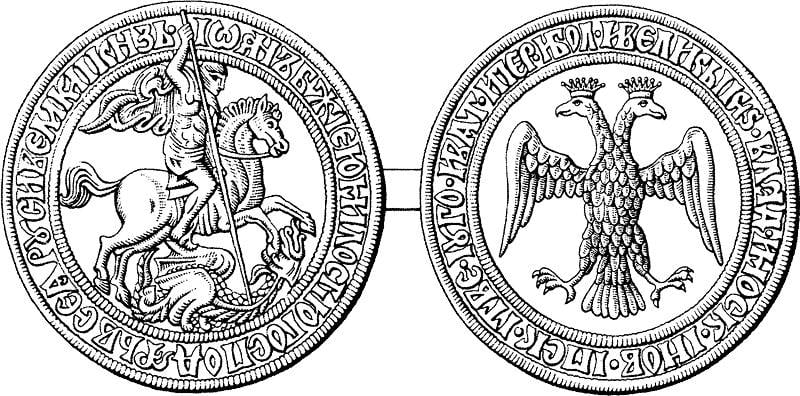
At the official level, succession was secured by the marriage of Ivan III with the niece of the last Byzantine emperor, Sophia Paleolog. The coat of arms of Palaeologov was chosen as the official state coat of arms of the Russian state. The theory of "Moscow - Third Rome" until the beginning of regular wars with the Ottoman Empire at the end of the XVII century did not go beyond the framework of a set of arguments mainly of a church-religious nature. Later, with the desire to achieve lasting control over the Black Sea, the idea of liberating Constantinople from the Turks gradually leaned against this theory.
1760-s. characterized in Russian foreign policy as the period of the Northern Chord, a kind of system developed and inspired by the head of the diplomatic department, Count Nikita Ivanovich Panin. According to this system, Russia should have been in alliance with the monarchies of northern Europe: Prussia, Sweden, the Commonwealth - in opposition to the emerging rapprochement between France and Austria. It should be noted that, apart from the actual Russian support of this rather loose alliance, its mechanism was heavily smeared with English gold. London competed tirelessly with Paris in the leadership in European cuisine.
The gears of Count Panin’s system with sin were evenly twisted in half until the outbreak of the Russo-Turkish war of 1768–1774. Then it suddenly became clear that the Polish-Lithuanian Commonwealth is not only the weakest link in this far from the most durable alliance, but also that has a manner of falling into a desperate rampage. In addition, the emergence of a strong Russian fleet enlightened sailors didn’t really like the Mediterranean Sea, who suddenly realized that they were spending a little gold there. The outbreak of war with Turkey brought Russia and Austria closer together, moreover, both yards had somewhat similar views on the Polish problem.
Britain has always been able to skillfully tack under the currents of changeable political wind and dexterously imbued with deep concern about the fate of Turkey. Ottoman Porta grew increasingly dull, decrepit and poor, despite the apparent monumentality. This monumentality was already generously gnawed from the inside. However, now the British gold smoothly flowed to the shores of the Golden Horn Bay.
Still, British diplomacy did not lose hope of keeping Russia in the wake of a favorable policy. During the years of the war for the independence of the United States of America, London first asked to send Russian troops to the rebel colonies, promising to generously pay for their maintenance. Having been refused, London began to look for ways to soften Catherine II’s position on Armed Neutralityby offering as a fee the island of Menorca. However, the empress was adamant. In Russian diplomacy, the direction of trends changed.
The Kyuchuk-Kaynardzhi peace treaty was nothing more than another truce, simply having much more favorable conditions than the previous ones. The empire turned its strength, generously spending resources not only on the costly Archipelago expedition and the large land army, but also on suppressing the widely spread Pugachev rebellion. The problem of the Black Sea straits remained unresolved. It was also necessary to resolve the situation of the neighborhood with the restless Crimean Khanate.
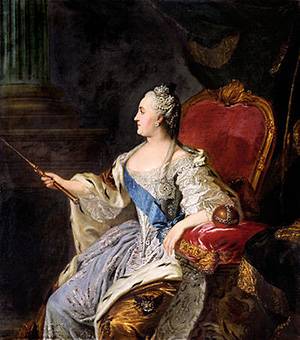
Catherine II believed that in order for the next war with the Ottoman Porto to end with an even more convincing result, Russia needed an ally — strong enough, which was Austria at that time. In order to attract a cunning and practical Vienna to the union against the Turks, a very tasty and appetizing gingerbread was needed. The role of such a “carrot” could fulfill the plan of division of territories jointly repulsed off the Ottoman Ports. After all, Austria was a much older enemy of the Turks. With appropriate hints and signals, Catherine II was able to stir up the curiosity of the Vienna court, that he himself began to seek rapprochement even with greater enthusiasm.
In 1779, between Austria and Prussia, the sluggish war ceased, having received the name “potato” in history. The Teshensky peace treaty was signed, the guarantor of which was Russia. Austria sought hegemony among a huge conglomerate of German states and principalities, strengthening its role in the fate of the agonizing Polish-Lithuanian Commonwealth and, of course, changing the situation in its favor in the Balkans. Without the support of Russia, these ambitious plans were hard to implement.
Austrian mercenary enthusiasm was received with approval in St. Petersburg. All the more so since they were carrying out their own, far more far-reaching plans. Approximately in 1779, Ekaterina and her favorite Grigory Potemkin originated and formed an idea, which later became known as the “Greek project”. Its essence was reduced to a large-scale reformatting of the Ottoman Empire. According to this plan, the Turks should have been driven out to Asia, to the lands, from where they came.
In the still vast European territories of Porta, where the Christian population was largely dominant, two formally independent states should be formed: Dacia and the Greek Empire. The structure of Dacia was supposed to include the territory of modern Romania, Moldova and northern Bulgaria. The Greek empire was supposed to include southern Bulgaria, Greece proper, the islands of the Archipelago and Macedonia. The capital for the Greek Empire was uncontestedly chosen Constantinople. It was assumed that before the combined power of the two empires, the Turks did not survive in their current borders.
At the head of the promising Greek Empire, in the unequivocal opinion of Catherine, her grandson, the second son of Tsarevich Paul, who was called Constantine at birth, was supposed to stand. He was born on April 27 of 1779, and in the birth manifesto it was pointedly pointed out that "one can expect an increase in the glory and power of Russia from a newborn." The Empress took care of the proper preparation of a possible future emperor. In honor of the birth of Constantine, a medal was knocked out, where the temple of Saint Sophia and the Black Sea were depicted. And over the cathedral, which the Turks turned into a mosque after the fall of Constantinople, the cross was clearly visible. In honor of the newborn, magnificent celebrations were arranged in the emphatic Greek entourage. The wet nurse of Constantine was also a Greek woman.
As for the second state, which was supposed to be created at the expense of the Turkish territories, Dacia, the question of the candidature of its ruler remained open. The Empress believed that this should be without a doubt the Christian monarch - the details were supposed to be coordinated with the Austrian side. While the process of polishing the Greek project was going on, Petersburg and Vienna continued to search for ways of rapprochement, and at the highest level.
Secret top level contacts
The first meeting of the two monarchs took place in 1780 in Mogilev. Joseph II arrived incognito under the name of Count Falkenstein. The young Austrian emperor became the autocratic ruler quite recently - in the recent past he shared the throne with his mother, Maria Theresa. Now he wanted to realize his own aspirations, first of all by expanding possessions in the Balkans and strengthening Austria’s influence in Europe.
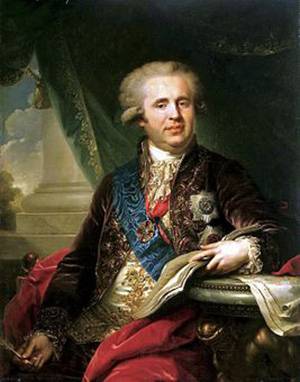
The first contact was, as they say now, in a “constructive way”, and Joseph II also incognito later visited Moscow, and then St. Petersburg. At the same time the contours of the future Russian-Austrian Union were outlined. Meanwhile, in September 1780, the entrusted secretary of Catherine II, Count Alexander Andreevich Bezborodko, presented the empress with a document entitled “Political Affairs Memorial”. By and large, it contained on paper considerations on the subject of the “Greek project” and the concessions that Russia could give Austria for its participation in the union.
Memorial was in fact the first attempt to document the goals and objectives of the “Greek project” that had hitherto been in the air. It is known that Grigory Potemkin took an active part in editing this document. In fact, it was also a homework for future negotiations with the Austrian side. Vienna, meanwhile, was far from the role of a passive observer, and sensing the benefit, showed keen interest. Especially since Joseph II was very pleased with the meeting with Catherine.
Now, after the monarchs, diplomats had to express their sophisticated word. In January, 1781, the Austrian ambassador in St. Petersburg, Count Ludwig von Kobenzl, in secrecy, proposed to the Russian Chancellor, Count Ivan Andreevich Osterman, to begin direct work on the design of the union. The exchange of courtesies and compliments between the two monarchs had to be converted into a document with mutual guarantees and obligations, sealed with signatures and seals.
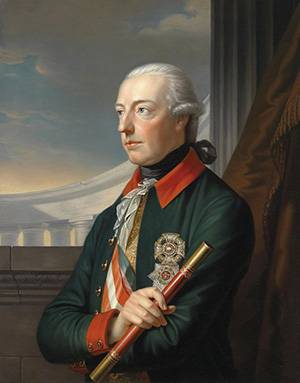
If in the diplomatic relation to the agreement it was possible to come pretty quickly, then especially in technical matters there were serious hiccups. The fact is that Emperor Joseph II, being a modest man personally, who forbade his subjects to fall on his knees and kiss his hand, carefully observed the traditions of monarchical parochialism. The emperor of the Holy Roman Empire did not want to put his signature second in the already formed document, and even in the copy that was intended for the Russian side. The position of Catherine II was similar, according to which “not to take away the place and not to give it to anyone”. The conclusion of the contract stalled in search of a way out, to whom and how to subscribe. Finally, the Russian empress found a solution, suggesting that both high contracting parties simply exchange letters of identical content, certified by a personal signature. The messages were issued and sent to 21 and 24 in May 1781.
Like many other treaties of a similar nature, this one had formal and unofficial provisions. According to the first, Russia and Austria were in favor of maintaining peace in Europe. If one of the parties was attacked, the other pledged to support the ally with military force or a subsidy, the amount of which was specified separately. Both powers guaranteed the integrity of the Commonwealth, which, however, lived out its last years.
In the secret part of the treaty, Joseph II recognized the terms of the Kyuchuk-Kaynardzhi peace treaty. He also did this on behalf of all his successors. For her part, Catherine recognized all the territorial acquisitions of Austria as a result of her numerous wars with the Ottoman Porte. And most importantly, the Austrian emperor agreed to participate in the future war with Turkey. The war, which, according to Catherine II, could lead to the implementation of the "Greek project." The Russian side proceeded to discuss its details shortly after signing the alliance with Austria.
To be continued ...
Information